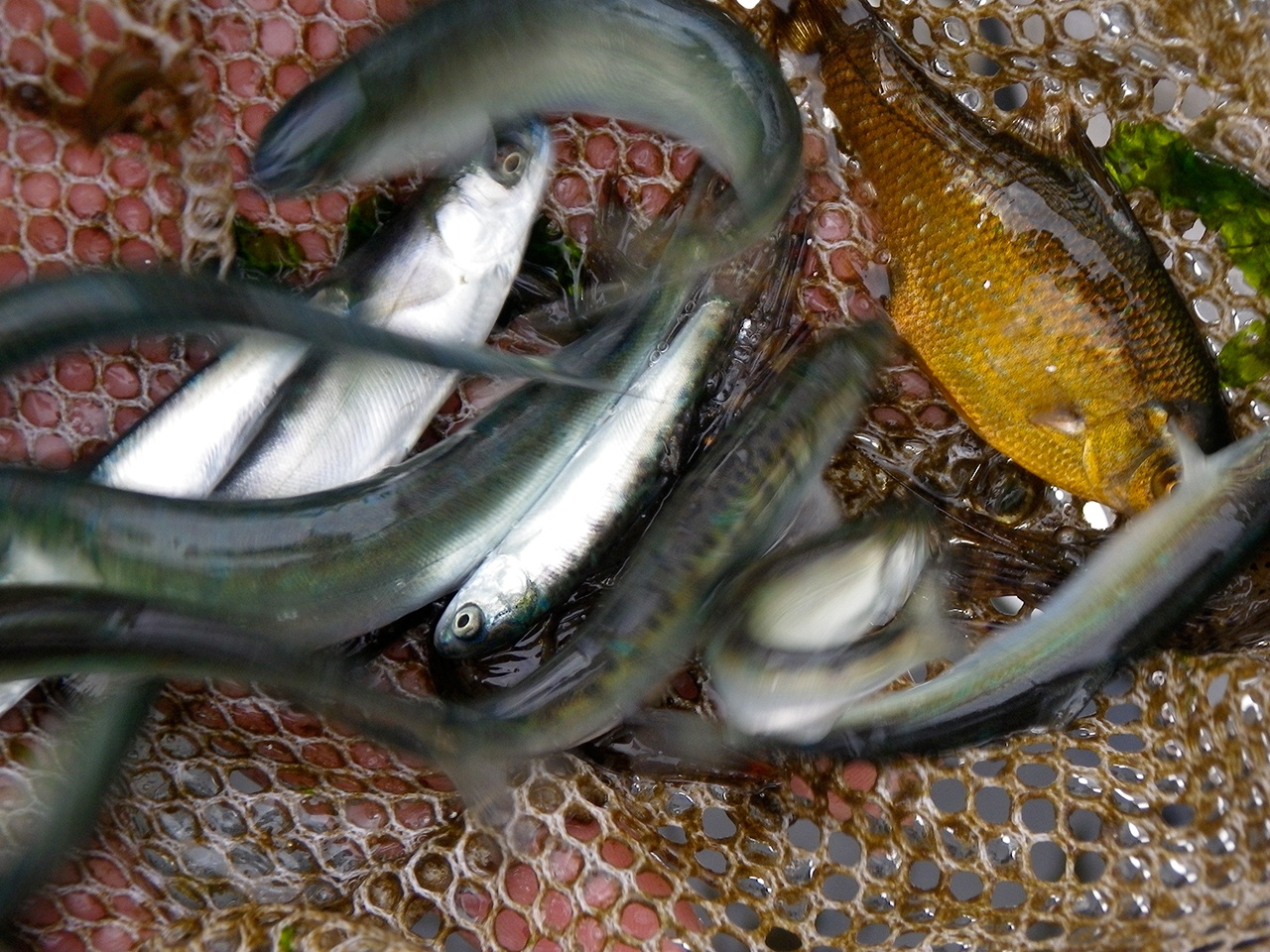An exceptionally large spring hatch of herring in the Gulf Islands provided a feast for juvenile Chinook migrating through the San Juan Islands last summer. Unfortunately, the number of Chinook leaving streams on the mainland remained very low in 2016 as a presumed result of warming seas. At the same time Pacific Sandlance, the other prey eagerly sought by salmon and seabirds, were at their lowest level in a decade, which is blamed for high numbers of starved, beached birds in July. The cause of the sandlance decline may also be climate related.
Kwiaht director Russel Barsh will present these findings and more at the Lopez community salmon team’s eighth annual SalmonAtion public information celebration on Saturday, Jan. 21 at Lopez Center, from 5:30 p.m. to 7:30 p.m. Free admission includes music, a light buffet and Lopez Island Vineyards wines.
Since 2009, Kwiaht scientists and volunteers have documented the gut contents of a little over four thousand juvenile Chinook caught at Watmough Bight on Lopez and Cowlitz Bay on Waldron. Fish caught at Watmough are largely from Puget Sound, while those caught at Cowlitz are mainly from the Fraser River watershed, making it possible to compare the health of Salish Sea Chinook under different environmental conditions and management as they pass through the islands on their way to the Pacific Ocean. On the whole, the larger, less developed Fraser system remains more productive than Puget Sound, Barsh said, and produces a larger proportion of wild as opposed to hatchery fish.
“We suspect that this reflects the severe pollution of Puget Sound with compounds that directly affect the fertility of salmon, and the zooplankton on which very young salmon and other small fish feed,” said Barsh.
“Puget Sound-origin salmon may not get a good meal of fish until they reach the San Juan Islands, which is a long way for a little smolt to swim on meager rations—if it survives at all,” Barsh said. Chinook that make it to the islands feast mainly on sandlance and herring. “About 80 percent of their diet in the islands is fish, and 98 percent of the fish they eat are herring and sandlance, which puts Chinook in direct competition with a number of seabirds that are also declining in number.”
Herring were fished commercially in the San Juan Islands until the 1970s, and the reasons for their continued overall decline remain unclear. Factors may include disease, loss of spawning habitat in shallow vegetated bays, and top-down pressure from all the seabirds, fish and marine mammals that hunt them. Kwiaht cooperates with the Lummi Nation, Washington Department of Fish and Wildlife and U.S. Geological Survey, leaders in research on herring recovery.
Far less is known about Pacific Sandlance, which are smaller but as calorie-dense as herring. Long believed to spawn on beaches like smelt in the Salish Sea, sandlance are better studied in Alaska and the western Pacific, where they form complex aggregations of genetically distinct populations that spawn at different depths and at different times of year. Kwiaht’s Lopez laboratory has been looking for similar patterns of genetic and behavioral diversity in Salish Sea sandlance, combining specimens caught in the islands with fish donated by federal and state agencies and the Tribes. Results will be published by the end of this year.
“What we have already learned about the role of herring and sandlance in the early marine survival of Chinook demands a re-orientation of San Juan County’s salmon recovery strategy, and the county’s expenditure of millions of state dollars,” Barsh said. “Most of the projects being funded will have little or no impact on salmon survival, as they cannot realistically protect or enhance the supply of herring and sandlance for use by salmon.”
As the longest running study of salmon diets in the Salish Sea, the Kwiaht project has observed cycles and trends in the interactions between Chinook and their prey that other researchers have missed.
“Other studies have lasted 2-3 years, and of course their results differ because they are snapshots of different phases of decadal-scale processes in the Salish Sea and the northeast Pacific Ocean,” said Barsh.
Kwiaht’s 2016 salmon research program was supported in part by collaborative agreements with the University of Washington and the Tulalip Tribes. Kwiaht volunteers fish Watmough Bight from May to September and welcome visitors to help pull nets and sort fish. Write to kwiaht@gmail.com for more information and schedules.




